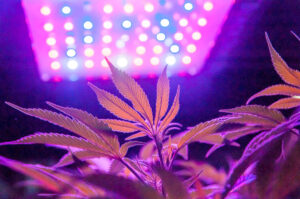Controlling THC Levels
Cannabis cultivation in the United States has largely focused on one of its cannabinoids known as THC. This is mostly because THC is central to the psychoactive effects that are pursued by many users. High THC cannabis has always been in high demand and with high demand comes a guaranteed increase in market supply. As the demand for the increase of THC in cannabis continues to grow, the ceiling for THC levels will also continue to rise which leads to the increase in cannabis cultivation. Throughout the years, it has been noticed through various studies that there are many factors to influencing THC potency in cannabis plants. Due to cannabis being a plant, most are environmental factors such as genetics, humidity, lighting, nutrition, and temperature. But the main factor of THC increasing significantly is the process of intentional breeding.
Intentional Breeding
Intentional breeding (also known as artificial selection) is a process where desirable traits are pursued in order to attempt to produce an organism with enhanced characteristics or traits that one would consider desirable. During the late 20th and early 21st centuries, the intentional cannabis breeding process led to very high THC plants. Some of the strongest cannabis strains reach over 30% THC today. This process is the leading factor in influencing THC potency within cannabis plants due to studies showing that being able to influence THC potency begins in the flowering stage of the plant. The time that plants spend in its blooming stage is a well known determinant of flower potency. The potency of cannabis flowers rises as flowering progresses but they can also reach a yield where potency will start to decrease the longer the plants are in their flowering stage. Realizing this has led to THC levels increasing drastically throughout the years. Compared to today’s standards, THC levels were extremely low in the early days of cannabis engineering. For example, THC levels lingered around 5% and sometimes even lower depending on the quality of the cannabis in the 1970s.
Studying THC
THC levels and its potency are not something that you can increase overnight. The high concentration THC strains that we obtain today took decades to cultivate. To meet the high demand for stronger THC strains, cannabis breeding has become more advanced gradually. There are also more studies taking place to learn more ways on how THC strains can be stronger to supply the high demand for it. One study that is being looked into is the possibility of UV light exposure increasing THC potency. Studies are suggesting that UV light exposure is causing an enhancement to some oil and phenolic compound production within cannabis plants. A hypothesis that has been formed is that THC is a cannabis sunscreen due to the presence of UV rays causing more THC to form as a result of a protective reaction. The data of this study supports this claim but this hypothesis is not supported by academic studies yet as it is federally illegal currently. Due to there being so many factors that come into play with increasing THC potency within cannabis, there are so many studies that are currently testing out various hypotheses such as THC production being a protective reaction against UV rays within cannabis plants.

